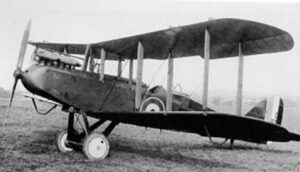
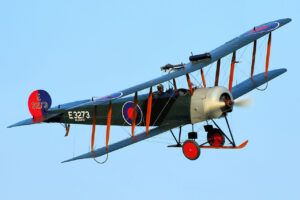 The 603 (City of Edinburgh) Squadron, part of the Royal Auxiliary Air Force (RAF), is stationed in Edinburgh, Scotland. Established on October 14, 1925, at RAF Turnhouse, it served as a day bomber unit within the Auxiliary Air Force. Initially, the squadron operated DH.9As (a British single engine biplane) and utilized Avro 504Ks (a biplane bomber) for training purposes. In March 1930, it transitioned to Wapitis (a two-seater general purpose military biplane), which were subsequently replaced by Harts (a British two-seater biplane light bomber) in February 1934. On October 24, 1938, the squadron was reclassified as a fighter unit, operating Hinds (a British light bomber) until the introduction of Gladiators (a British biplane fighter) in late March 1939. Over those years the men of 603 Squadron made many equipment transitions.
The 603 (City of Edinburgh) Squadron, part of the Royal Auxiliary Air Force (RAF), is stationed in Edinburgh, Scotland. Established on October 14, 1925, at RAF Turnhouse, it served as a day bomber unit within the Auxiliary Air Force. Initially, the squadron operated DH.9As (a British single engine biplane) and utilized Avro 504Ks (a biplane bomber) for training purposes. In March 1930, it transitioned to Wapitis (a two-seater general purpose military biplane), which were subsequently replaced by Harts (a British two-seater biplane light bomber) in February 1934. On October 24, 1938, the squadron was reclassified as a fighter unit, operating Hinds (a British light bomber) until the introduction of Gladiators (a British biplane fighter) in late March 1939. Over those years the men of 603 Squadron made many equipment transitions.
In August 1939, the squadron commenced yet another transition, this time to Spitfires (a British single-seat fighter aircraft). As the war loomed closer, the squadron shifted to full-time operations. Within two weeks of the outbreak of World War II, Brian Carbury was permanently assigned, and the squadron started receiving Spitfires, transferring its Gladiators to other squadrons throughout October.
Scotland was within the range of Nazi Germany’s long-range bombers and reconnaissance planes. The Luftwaffe primarily targeted the Royal Naval Home Fleet at Scapa Flow. The 603 Squadron, now equipped with Spitfires, was ready in time to intercept the first German air raid on the British Isles on October 16th. It succeeded in shooting down a Junkers Ju 88 bomber over the Firth of Forth, north of Port Seton…marking the first enemy aircraft downed over Great Britain since 1918 and the RAF’s initial victory in World War II. The squadron continued its defensive role in Scotland until August 27, 1940, after which it rotated to Southern England, joining Number 11 Group at RAF Hornchurch. There, it participated in the remaining months of the Battle of Britain, starting from August 27, 1940.
Two days after becoming operational in southern England, Carbury secured his first of 15½ victories (not sure how one has a half victory), ranking as the fifth highest scoring fighter ace of the battle. He received the Distinguished Flying Cross and Bar with 603 Squadron during the conflict. Air Commodore Ronald ‘Ras’ Berry achieved approximately 9 (of a final total of 14) victories at this time, while RAF Officer ‘Sheep’ Gilroy claimed more than 6 victories. Flight Lieutenant Richard Hillary, with 5 victories, was shot down on September 3rd during a skirmish with BF 109s of Jagdgeschwader 26 off Margate at 10:04am. Rescued by the Margate lifeboat, he suffered severe burns and subsequently spent three years in hospital, where he authored the book, The Last Enemy. Recent academic research, including an examination of German records, has identified 603 Squadron as the highest-scoring squadron in the Battle of Britain by its conclusion.
Upon returning to Scotland in late December, Carbury inflicted damage on a Ju 88 over Saint Abb’s Head on Christmas Day. He then departed from the squadron in January 1941 to serve as an instructor at the Central 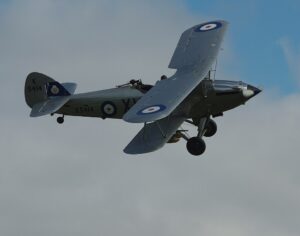
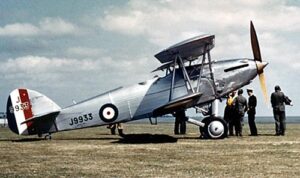
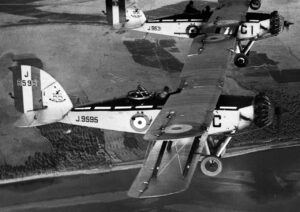 Flying School. By May 1941, the squadron had relocated southward to participate in sweeps over France, known as “rhubarbs,” which continued until the year’s end.
Flying School. By May 1941, the squadron had relocated southward to participate in sweeps over France, known as “rhubarbs,” which continued until the year’s end.
Following a period in Scotland, 603 Squadron departed in April 1942 for the Middle East, with its ground echelon arriving in early June. Simultaneously, Flight Sergeant Joe Dalley transitioned from the squadron to Photographic Reconnaissance Unit (PRU) duties, piloting a Spitfire PR from RAF Benson directly to Malta. There, he joined 69 Squadron RAF, becoming one of the four pilots dubbed the “Eyes and Ears” of the Island. The squadron’s aircraft were loaded onto the US aircraft carrier Wasp and launched towards Malta on April 20th to bolster the island’s hard-pressed defenders. After almost four months of defending Malta, the surviving pilots and planes were integrated into 229 Squadron on August 3, 1942.
By the end of June 1942, the ground echelon of 603 Squadron had relocated to Cyprus, where it operated as a servicing unit for six months before its return to Egypt. In February 1943, the arrival of Bristol Beaufighters and their crews marked the commencement of convoy patrols and escort missions along the North African coastline. August saw the initiation of sweeps over the Aegean’s German-occupied islands and areas off Greece. The squadron continued its assaults on enemy shipping until a scarcity of targets facilitated its return to the UK in December 1944.
On January 10, 1945, 603 Squadron reformed at RAF Coltishall and, in a curious twist of fate, inherited the Spitfires and some personnel of 229 Squadron RAF…the very squadron that had previously absorbed 603 Squadron at Ta’ Qali in 1942. Fighter-bomber operations commenced in February over the Netherlands and persisted until April. Subsequently, the squadron returned to its home base at Turnhouse for the concluding days of the war. The squadron was officially disbanded on August 15, 1945.
603 Squadron was reestablished as part of the Auxiliary Air Force on May 10, 1946, and started recruiting for a Spitfire squadron in June at RAF Turnhouse. The squadron received its first Spitfire in October and operated this aircraft until it transitioned to the De Havilland Vampire FB.5s in May 1951. By July, the squadron was fully equipped with the new aircraft, which it flew until the unit was disbanded on March 10, 1957.
The new 603 Squadron originated from Number 2 (City of Edinburgh) Maritime Headquarters Unit in October 1999, providing the foundation for the new 602 (City of Glasgow) Squadron RAuxAF in 2006. 603 Squadron continued to be based in Edinburgh. In 2007, to mark the 50th Anniversary of the Battle of Britain Memorial Flight, the Flight’s Supermarine Spitfire IIa, P7350, which served in 603 Squadron during the Battle of Britain, bore the squadron’s code XT-L, the same as Gerald ‘Stapme’ Stapleton’s personal aircraft, for two years.
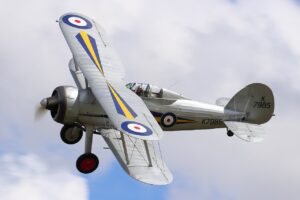
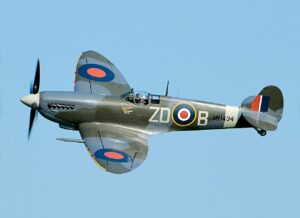 For several years leading up to 2013, the main trade at 603 Squadron was the RAF Regiment, although the Squadron also provided support in Mission Support and Flight Operations trades. In late 2012, it was announced that the Squadron would start recruiting for the RAF Police in 2013. Consequently, the Squadron has transitioned to primarily being an RAF Police unit, while still retaining a Flight of the RAF Regiment.
For several years leading up to 2013, the main trade at 603 Squadron was the RAF Regiment, although the Squadron also provided support in Mission Support and Flight Operations trades. In late 2012, it was announced that the Squadron would start recruiting for the RAF Police in 2013. Consequently, the Squadron has transitioned to primarily being an RAF Police unit, while still retaining a Flight of the RAF Regiment.


Leave a Reply